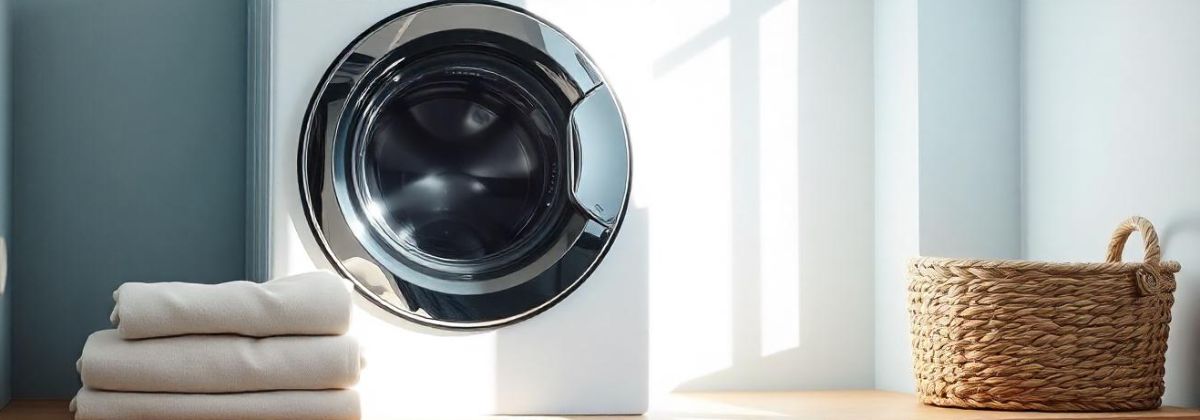12 Feb Laundry Myths: What Actually Works and What Doesn’t
Laundry myths have been around for generations and have been passed down as household wisdom. Many of these so-called “hacks” claim to make clothes cleaner, fresher, or longer-lasting. However, not all of them hold up to the test of time—or science. Some myths lead to wasted detergent, damaged fabrics, and higher energy bills. Others result in clothes that aren’t as clean as they should be. Have you ever heard that adding extra detergent gets clothes cleaner? Or does washing everything in hot water remove all germs? These are just a couple of the many laundry facts and myths that don’t work. In this post, we’ll separate fact from laundry myth and uncover what keeps your laundry fresh, clean, and long-lasting.
Common Laundry Myths
Believing in laundry myths can do more harm than good. Let’s look at some of the most common misconceptions and what works.
Laundry Myth #1: More Detergent Means Cleaner Clothes
- Using extra detergent should lead to fresher, cleaner laundry, but that’s not the case. Too much detergent creates excess suds, trapping dirt and residue instead of rinsing it away. This can leave clothes feeling stiff and even cause odours.
- What Works Instead: Use the recommended amount of detergent based on your load size and soil level. If you have a high-efficiency washing machine, stick to HE detergent to prevent buildup.
Laundry Myths #2: Hot Water Cleans Clothes Better
- While hot water helps remove grease and tough stains, it’s not always the best option. Some fabrics shrink in high temperatures, and heat can cause colours to fade over time.
- What Works Instead: Use cold or warm water for most laundry. Cold water is adequate for bright colours and delicates, while warm water works well for everyday loads—reserve hot water for heavily soiled items like towels and bedding.
Laundry Myth #3: Fabric Softener Makes Clothes Cleaner
- Fabric softener doesn’t clean clothes—it only coats them with a thin layer of chemicals to make them feel softer. Over time, this coating can trap residue, reducing fabric breathability and absorbency, especially in towels.
- What Works Instead: Skip fabric softener for towels and moisture-wicking fabrics. Use white vinegar in the rinse cycle if you want soft clothes without buildup.
Laundry Myths #4: Bleach is the Best Stain Remover
- Bleach can remove some stains, but it’s harsh on fabrics and can weaken fibres over time. When overused, it can also cause white fabrics to yellow.
- What Works Instead: For tough stains, pretreat with a stain remover or a mix of baking soda and water before washing. Oxygen-based bleach is a gentler alternative for whitening fabrics.
Laundry Myth #5: Washing Clothes Less Often Makes Them Last Longer
- Laundry Facts and Myths: Overwashing can indeed wear out fabrics, but waiting too long between washes can be just as damaging. Sweat, oils, and dirt break down fibres and lead to musty odours.
- What Works Instead: Wash clothes based on how often you wear them. Items like jeans and sweaters can go longer between washes, but underwear, socks, and workout gear need frequent cleaning.
Laundry Myth #6: The More Clothes You Stuff into the Machine, the More You Save Water and Energy
- Overloading the washing machine may seem efficient, but it prevents proper cleaning. Clothes won’t get enough movement, and detergent may not be distributed evenly, leading to poor results.
- What Works Instead: Fill the drum about three-quarters full for the best balance of water usage and cleaning power.
Laundry Myths #7: The Dryer Shrinks Clothes
- Many people assume the dryer is responsible for shrinking clothes, but the real issue is heat. High temperatures can cause certain fabrics, like cotton and wool, to contract.
- What Works Instead: Check fabric care labels and use low heat or air-dry delicate garments. Hanging clothes to dry can prevent shrinkage and extend their lifespan.
Laundry Myth #8: Adding a Dry Towel to the Dryer Speeds Up Drying Time
- Laundry Facts and Myths: While this hack seems logical, a single dry towel doesn’t significantly reduce drying time for an entire load. In some cases, it may even absorb moisture from other clothes, prolonging the process.
- What Works Instead: Clean the lint filter regularly, use dryer balls to improve air circulation, and avoid overloading the machine.
Final Thoughts on Laundry Myths
Falling for laundry myths can lead to wasted time, damaged fabrics, and ineffective washing habits. The truth is that minor adjustments—like using the proper water temperature, measuring detergent correctly, and choosing proper drying methods—can make a big difference. By debunking these myths and following proven techniques, you’ll keep your clothes cleaner, fresher, and in excellent condition for longer.
Next time you do laundry, forget the old wives’ tales and stick to what works. Have you heard any laundry myths that turned out to be false? Please share them in the comments!
Read More Here:
Common Laundry Mistakes: Mistakes People Make When Doing Laundry at Home




Sorry, the comment form is closed at this time.